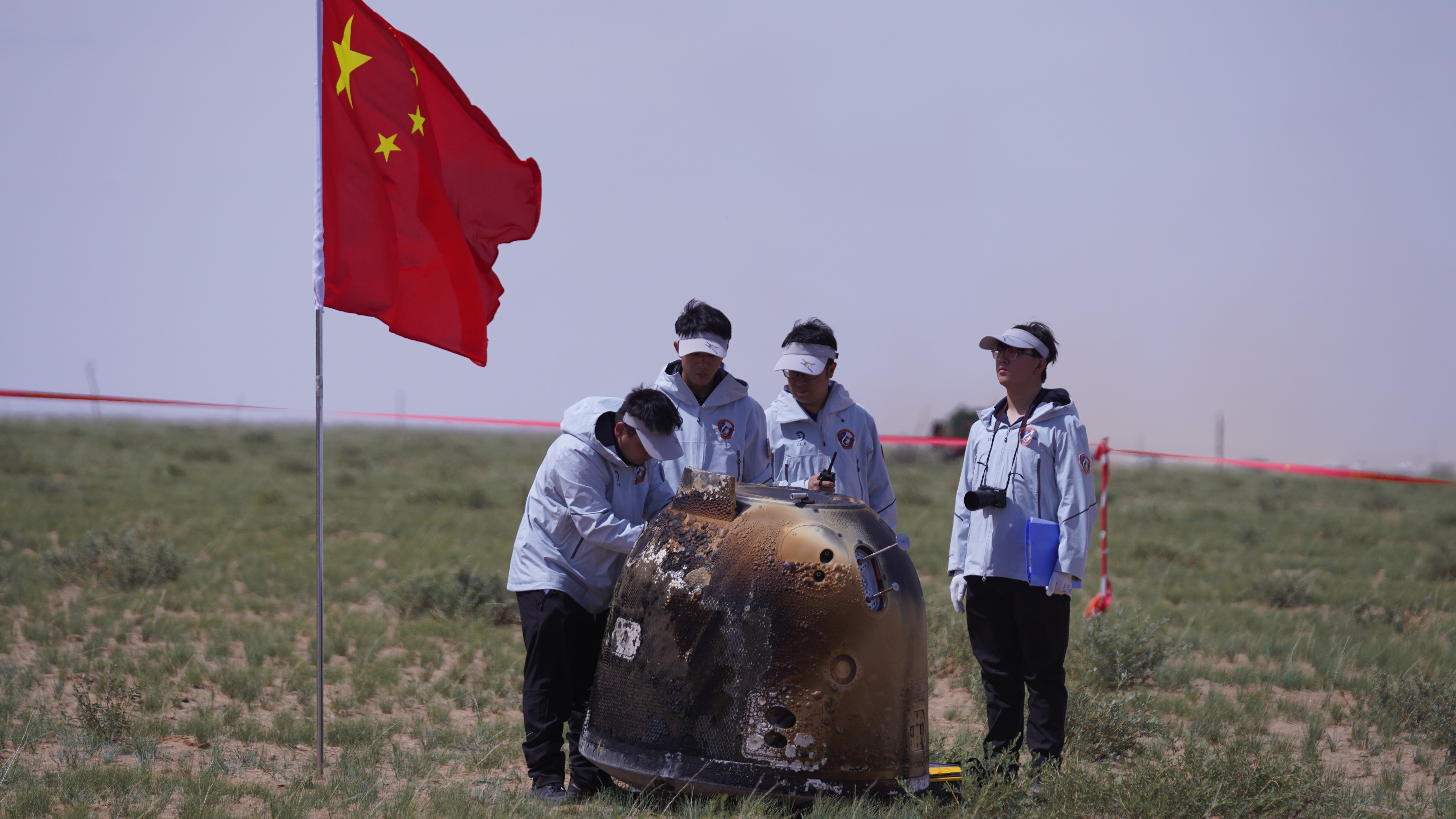China rover returns historic samples from far side of the moon — and they may contain secrets to Earth's deep past
China's Chang'e-6 lunar module has returned from the moon's far side with samples in a historic mission. Its success is a key step toward understanding our planet's early history, and a milestone in the race with the U.S. to reach the moon's south pole.

China has become the first nation to collect material from the far side of the moon and return it to Earth.
The Chang'e-6 lunar module, which collected the sample, completed its historic mission with a touchdown in China's northern Inner Mongolia region around 2pm local time on Tuesday (June 25).
The sample is the first to be collected from the side of the moon that always faces away from Earth.
"The Chang'e-6 lunar exploration mission has been a complete success," Zhang Kejian, head of the China National Space Administration (CNSA), said from the control room amid applause and celebrations.
Named after the Chinese goddess of the moon, the Chang'e-6 mission was launched atop a Long March V rocket from China's southern Hainan province on May 3. It spent more than a month in transit before arriving at the South Pole-Aitken (SPA) basin on the moon's far side on June 2.
Related: China reveals most detailed geological map of the moon ever created
Once inside the basin — the oldest and largest impact crater on the moon's surface — the mission's lander drilled and collected samples using its robotic arm before ascending to reconnect with the orbiter and begin the journey home.
Get the world’s most fascinating discoveries delivered straight to your inbox.
Not everything was known about the mission before its launch. China's space agency had announced its objectives, landing zone and scientific payloads — including undisclosed cargo from Italy, France, Sweden, and Pakistan — but the presence of a rover was unknown until it was spotted in an image released by the China Academy of Space Technology. It appeared as a small gray object, with distinctive wheels, attached to the lander's side.
By analyzing the returned samples, scientists hope to get a better understanding of the moon and Earth's evolution. Unshielded by our planet, the moon's unexplored far side is much more pockmarked by asteroid impacts than its near side, which is tidally locked to face us.
This means that the samples may contain answers to mysteries relating to these asteroid impacts, as well as the early state of the young Earth; because the moon lacks plate tectonics, it serves as a frozen record of the early development of the Earth-moon system.
China also hopes to get a better understanding of the resources available on Earth's closest natural satellite for use in future space missions. NASA administrator Bill Nelson has previously said that the speed and progress of China's lunar missions effectively put the country "in a race" with the U.S. to get to the moon's south pole.
"My concern is that they get there first and then say: 'this is our area, you stay out,'" Nelson told lawmakers at a Congressional hearing on April 30. "Because the south pole of the moon is an important part. We think that there is water there, and if there's water, then there's rocket fuel."
Chang'e-6's success comes during a period of growing ambition for China's space programs. China has recently landed rovers on the moon and Mars and completed construction of the Tiangong space station in 2022. It is also leading construction efforts of an International Lunar Research Station, which is slated for completion by 2030.

Ben Turner is a U.K. based writer and editor at Live Science. He covers physics and astronomy, tech and climate change. He graduated from University College London with a degree in particle physics before training as a journalist. When he's not writing, Ben enjoys reading literature, playing the guitar and embarrassing himself with chess.


